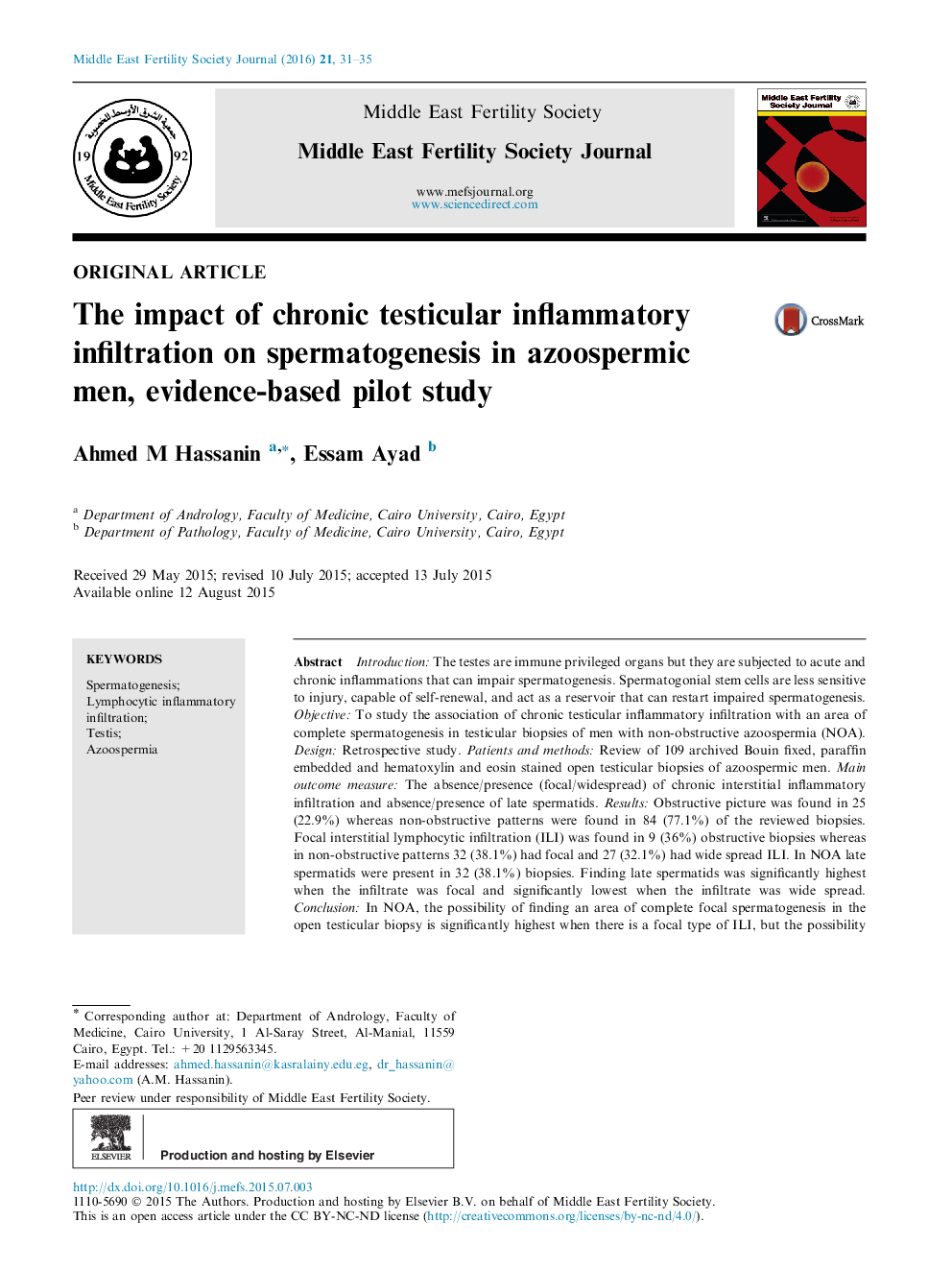| Article ID | Journal | Published Year | Pages | File Type |
|---|---|---|---|---|
| 3966068 | Middle East Fertility Society Journal | 2016 | 5 Pages |
Introduction: The testes are immune privileged organs but they are subjected to acute and chronic inflammations that can impair spermatogenesis. Spermatogonial stem cells are less sensitive to injury, capable of self-renewal, and act as a reservoir that can restart impaired spermatogenesis. Objective: To study the association of chronic testicular inflammatory infiltration with an area of complete spermatogenesis in testicular biopsies of men with non-obstructive azoospermia (NOA). Design: Retrospective study. Patients and methods: Review of 109 archived Bouin fixed, paraffin embedded and hematoxylin and eosin stained open testicular biopsies of azoospermic men. Main outcome measure: The absence/presence (focal/widespread) of chronic interstitial inflammatory infiltration and absence/presence of late spermatids. Results: Obstructive picture was found in 25 (22.9%) whereas non-obstructive patterns were found in 84 (77.1%) of the reviewed biopsies. Focal interstitial lymphocytic infiltration (ILI) was found in 9 (36%) obstructive biopsies whereas in non-obstructive patterns 32 (38.1%) had focal and 27 (32.1%) had wide spread ILI. In NOA late spermatids were present in 32 (38.1%) biopsies. Finding late spermatids was significantly highest when the infiltrate was focal and significantly lowest when the infiltrate was wide spread. Conclusion: In NOA, the possibility of finding an area of complete focal spermatogenesis in the open testicular biopsy is significantly highest when there is a focal type of ILI, but the possibility is significantly lowest when the infiltrate is widespread. This may guide the clinical testicular sperm extraction (TESE) procedure.
